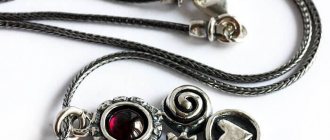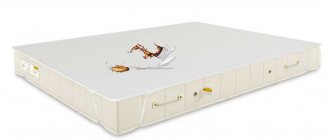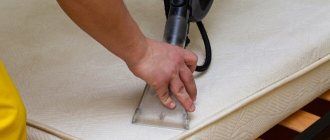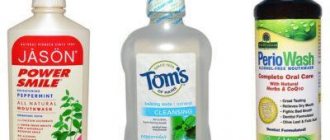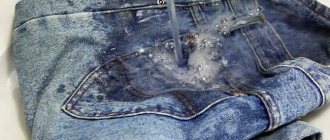Modern man spends most of his time wearing shoes. At work - these are classic shoes, in the gym - sneakers, at home - cozy slippers.
From time to time, or for some on an ongoing basis, shoes begin to emit a specific unpleasant odor. This problem especially concerns products for sports and outdoor activities.
Before buying expensive products and experimenting with available materials, you need to find out the reason for the appearance of the knock-down aroma.
Advantages
Soda has many advantages compared to store-bought household chemicals.
- Economical: consumed slowly.
- Neutralizes harmful microorganisms: fungal spores, viruses, bacteria.
- Has no harmful effects on the skin. On the contrary, it prevents excessive sweating and sebum production.
- Effectively cleanses any contamination (no matter: superficial or deep) thanks to its fine-crystalline structure. When dissolved in water, it forms a caustic mixture that can even fight rust and thick deposits (read about using soda to clean the bathroom).
- It is hygroscopic, quickly absorbs moisture, therefore it is used for drying (in bags).
- Eliminates odor due to its antibacterial effect.
Don't forget to check with your doctor
Meanwhile, hyperhidrosis is not only an aesthetic problem, but also primarily a medical problem. The cause can be a number of diseases, such as diabetes and hyperfunction of the thyroid gland (with these diseases, the normal production of hormones is disrupted, which leads to malfunctions in the sweat gland system). Or diseases of the cardiovascular and nervous system, kidney disease and hypertension.
Skin diseases such as fungus are also one of the common causes. Here folk remedies are powerless and drug treatment from a specialist is required. If, in addition to sweating and an unpleasant odor, there is itching and discomfort, you need to consult a dermatologist. He will select medicinal ointments and gels that are right for you.
Do not forget about such possible reasons as heredity and taking medications that can provoke excessive sweating.
Often the cause of excessive sweating is a stress factor. When stressed, large amounts of adrenaline and cortisol are released into the blood. They activate the autonomic nervous system of hormones, and that, in turn, forces other systems and organs to work in an enhanced mode. Blood pressure rises, blood vessels narrow, and blood thickens. The heart is forced to work, pumping thick blood. The work of the heart in this mode entails increased sweating. This occurs to improve the heat exchange of the body, which is under stress. The whole body, palms, and, of course, feet can sweat. By learning to control stress, you can solve the problem of excessive sweating.
Most often, this delicate problem haunts men. The reason is quite natural; in men, sweating of the body and legs has a higher index. And there is a scientific explanation for this. At the dawn of evolution, the main occupation of men was hunting, which involved a lot of effort. Also, men have a larger physique and greater body mass, and therefore heat exchange is higher. Therefore, the ability to sweat has evolved in men more than in women. Not least of all, the male sex hormone testosterone plays a role in increased sweating. Modern men have to wear closed shoes more often, they are more physically active and more often exposed to stress. So the question is: “Do your feet smell bad and what should you do?” - sounds most often from the stronger half of humanity.
- Author: Ekaterina Kozhevnikova
How to fight odor
Soda is an acidic sodium salt of carbonic acid. When interacting with water, it turns into a weak alkali, which has a detrimental effect on microorganisms.
But to eliminate odor in shoes, dry powder is used: an alkaline reaction occurs when it interacts with moist air vapor. The smell disappears after 12–24 hours. The effect is explained by the destruction of pathogenic microflora.
Due to its hygroscopicity, sodium bicarbonate powder also absorbs other foreign odors that are not associated with the activity of microorganisms.
Tip: To give your shoes a pleasant scent, add dry fragrance, rose or lavender petals to baking soda, and place a pad with the mixture inside your boots or sneakers.
Useful tips
There are other ways to combat unpleasant odor in shoes:
- You can use, for example, vinegar. To do this, soak cotton wool in a vinegar solution and wipe the product outside and inside. It is advisable to use 6% or 9% vinegar. Then the boots need to be placed in the air for ventilation.
- Lemon juice is a great natural option for eliminating odor. In addition, lemon juice cares for shoes and softens them. You can even wipe your boots and shoes with lemon zest. Natural oils will provide the product with a natural shine.
- In electronics supermarkets you can find a new gadget: drying with an ionizer and ultraviolet radiation. This device allows you to get rid of fungi and various types of bacteria with one click. As a result, the unpleasant smell will disappear along with them.
- For black boots and sneakers there is a universal remedy: activated carbon. For the entire procedure, only one plate is required.
- There are also non-standard options for eliminating strong odors. For example, put the product in the freezer. At minus degrees, bacteria and fungi simply cannot survive. The smell will disappear instantly.
ATTENTION! You should not use this method for varnished products. They may lose their shine or become a little cracked.
There are a lot of ways to get rid of a strong odor, and with it, unpleasant sensations. Depending on the type of shoes and the availability of consumables, you can choose a convenient method. But it is still worth noting that soda is the most inexpensive material that can be bought in absolutely any supermarket. It is economical, profitable and fast. We hope that the useful tips from this article will help you solve your problems.
The nature of the unpleasant odor
In the case of shoes, the persistence of the odor is explained by the active proliferation of the microbial environment and the release of waste products. Our olfactory organs easily capture the volatile molecules of these substances.
The odor emanating from boots, shoes or sneakers can also be associated with the quality of the materials from which they are made, their absorbent and permeable capacity:
- burnt rubber (rubber) - typical for shoes made from low-quality cheap petrochemicals;
- rotting - occurs in boots, low shoes and boots made of leatherette, which does not dry well.
Another factor is the parameters of the room in which your shoes are stored. Smells depend on this:
- dampness (swampy) - a frequent companion of shoes and clothes stored for a long time in unventilated areas with high humidity;
- pets (especially dogs and cats) - torment all owners without exception, are considered the most caustic and difficult to remove;
- kitchen and tobacco - shoes easily absorb them.
Reference. An unnatural odor appears in shoes if they are worn incorrectly (out of season) or if they are not properly cared for. High-quality products made of suede, leather, and nubuck require special impregnation and deodorization.
Causes
Bacteria and microorganisms are considered the main culprits of stink. Abundantly secreted sweat is an excellent environment for their reproduction. The higher the degree of sweating, the faster the shoes become unusable.
It is bacteria that should be thanked for the recognizable aroma in the locker rooms of cheap gyms and fashionable fitness clubs. In addition to physical activity, the following factors can cause odor:
- poor quality shoes;
- regular wear of products made from artificial materials;
- increased sweating;
- foot fungus;
- neglect of personal hygiene rules;
- infrequent shoe washing.
Regardless of the origins of the problem, it can be solved.
In cases where fungus or other foot diseases have become the decisive factor, it is necessary to first cure the disease. For the rest, hygiene and several effective methods for cleaning shoes can help. One of the most effective remedies is considered to be ordinary baking soda.
Deodorizing recipes
Attention! The use of sodium bicarbonate powder in high concentrations causes side effects and is therefore contraindicated for people suffering from chronic respiratory diseases.
Pouches
To combat the smell of sweat, sew a couple of bags made of cotton or other thin natural fabric the size of the shoe and fill them with soda. Use as liners at night.
Lifehack. If you urgently need to dry your shoes, use old nylon socks or tights.
As aromatic additives, you can add chamomile flowers, lavender, and sage to the soda. If your sweat smells strongly sour, use lemon or orange zest.
To combat unpleasant odor not associated with increased sweating, drop a little of your favorite essential oil or extract (eucalyptus, spruce, pine), fruit and flower extracts into your shoes.
Advice. For people who sweat, preliminary antibacterial shoe cleaning is recommended. Otherwise, the deodorizing effect may have unexpected results.
Baking soda can be used in its pure form: pour it under the insoles and treat the inner surfaces. The next morning, remove the remaining powder with a vacuum cleaner.
Mixture with peroxide
A mixture of baking soda and hydrogen peroxide in equal quantities is suitable for treating insoles.
- Rub the mixture on the insoles and leave them in the fresh air for a couple of hours.
- Rinse shoes with alcohol.
- Dry.
With ammonia
Make a solution: 2 tbsp. l. Stir soda in a small amount of ammonia. Wipe the insoles and inner non-fabric surfaces of the shoes.
With essential oils
The best antibacterial effect is achieved by combining baking soda with essential oils. In addition, the shoes acquire a fresh aroma.
Suitable aroma oils:
- tea tree;
- sweet orange or lemon;
- lavender;
- rosemary;
- sandalwood;
- sage;
- mint;
- juniper, pine or spruce;
- bergamot;
- eucalyptus.
The best options: pine or eucalyptus. They have a persistent fresh smell that is difficult to overcome if you clean your shoes regularly.
A cotton swab dipped in one of these essential oils can be used on insoles to neutralize bacteria and odors.
Other anti-odor methods
- Mix vinegar and peroxide and apply with a cotton pad to the insoles.
- Place 8 tablets of activated carbon in each shoe and leave overnight.
- Buy insoles that are scented or contain activated charcoal.
- Place tea bags in the toes and heels.
- Send your shoes to the cold (for example, on an unglazed balcony).
- Treat the inner surfaces of the shoes with a solution of potassium permanganate.
- Use Candide powder or any shoe deodorant in the form of a spray, stick, tablets, or balls.
- Wipe your boots with an alcohol-containing solution or vodka for 2 weeks.
- For a one-time treatment, use apple cider vinegar.
If you can't wash it
Leather and fur shoes cannot be washed in a washing machine. If the option with “soda socks”, which is described above, does not inspire confidence, you can get by with another method - a solution of water and vinegar. Vinegar disinfects well and eliminates odors. Simply mix ½ cup water and ½ cup 9% vinegar in a spray bottle. Spray the inside of the shoe and after a while wipe the entire inside surface with a paper towel. And let them dry before putting them on again.
Feet and shoes stink: how to get rid of the smell
Foot care rules
To effectively combat the smell of sweat, you need to follow simple hygiene rules:
- Wash your feet 2 times a day.
- Change your socks daily.
- Wear shoes made from natural materials.
- Engage in the prevention and timely treatment of fungal diseases of the feet and nails.
- Take care of your shoes: do regular cleaning, repairs, change insoles at least once a month.
Deodorant
A good way to combat sweaty feet is the natural absorbent potato starch: mix it with baking soda in equal parts. Add essential oils and extracts of your choice.
The product lasts on average from 4 to 10 hours.
Advice. If you want to make homemade deodorant for future use, add beeswax or vitamin E - natural antioxidants that act as preservatives. Additionally, coconut oil will help soften the skin and prevent the formation of corns.
Hard wax
Ingredients:
- disinfected storage container;
- ceramic bowl;
- 6 g beeswax;
- 3 tbsp. l. oils;
- 1 tsp. vitamin E;
- 2 tbsp. l. soda;
- 2 tbsp. l. starch;
- 10 drops of tea tree oil;
- 2 drops of any essential oil (fragrance).
Cooking method:
- Melt the wax in a water bath until liquid.
- Carefully add all ingredients.
- Stir and pour into the mold.
- Leave to cool in the refrigerator or in fresh cool air.
Apply to feet and toes before leaving home and at night.
Baths
With salt. Mix baking soda and iodized salt in equal proportions. Add to a warm foot bath. Take the procedure for 15 minutes. Then treat your feet with talcum powder.
With herbs. Take 1 tsp. nettle, mint, calendula and chamomile. Fill with hot water (500 ml). Boil for 15 minutes, cool slightly and add 2 tbsp. l. soda Soak your feet in the solution for 20 minutes.
General rules for using soda baths
It must be remembered that effectiveness against sweat will be guaranteed only if the nuances are strictly observed. Otherwise, the skin on your feet can be damaged. That's why:
- Feet should be soaked in warm soda liquid, duration – 15-20 minutes.
- When fighting sweat, water must be warm; hot water will cause excessive sweating.
- After a soda bath, feet and heels are cleaned with pumice (a special brush), and then rinsed first with warm and then cooled water.
- After the manipulation, the feet are dried with a towel: this should be a specially prepared foot towel for personal use.
- To soften the epidermis, the feet and heels are lubricated with a nourishing cream or other product that softens the dermis, and after waiting for the cream to be absorbed into the skin, cotton socks are put on.
- Baths against foot sweat should be carried out in the evening, the course consists of 7-10 sessions, but it is allowed to use the baths 3 times a week - under any circumstances, the result will be noticeable immediately.
Whitening properties
The reasons why white shoes turn yellow: improper drying (on a radiator or in direct sunlight), the use of aggressive detergents or too hot water, prolonged contact with powder and other chemicals.
Several ways to whiten sneakers or sneakers:
- Take your shoes to a dry cleaner or repair shop for repainting.
- Use special white foam with color pigments.
- Try available remedies: vinegar, lemon, ammonia, laundry soap, soda or hydrogen peroxide.
A good whitening effect is achieved by combining soda with other available household chemicals (in equal parts), such as:
- hydrogen peroxide;
- toothpaste;
- salt;
- vinegar;
- acetone;
- talc and water;
- lemon acid.
First you need to clean the shoes from dirt, then apply the previously prepared composition to the surface using a shoe or an old toothbrush. Leave for 10–15 minutes. Remove with a damp cloth.
Attention! Homemade cleaners are suitable for soles made of foam, rubber or plastic.
Recipes
- Apply peroxide, vinegar, lemon juice + powder (in equal parts) to the yellowed areas with a brush, leave for 7 minutes.
- For rubberized soles, apply gasoline lotions for 5 minutes.
- For shoes with fabric uppers, rub a little Vaseline into the stains, leave for 15 minutes, then wash with laundry soap and dry.
- Rub a thick paste of powder and water onto the contaminated surface with a brush, let it soak in for 10 minutes, then rinse thoroughly with lukewarm water.
- Dilute 20 ml of vinegar with 60 ml of water and soak the yellowed areas.
Precautionary measures
- Check the composition of the shoe materials: whether the cleaning products you purchased are suitable for them.
- Carry out all work with gloves to avoid allergies, contact with caustic substances on the skin, chemical burns, and irritation.
- Dangerous variations that require additional protective measures (gloves, glasses): hydrogen peroxide with vinegar; chlorine bleach and vinegar; bleach and ammonia/alcohol.
The listed methods are not suitable for shoes made of suede, leather and some (loose) types of fabric. This will require professional dry cleaning services.
In most cases, having a box of baking soda at home is enough to clean, whiten and deodorize your shoes. This is a cheap, relatively safe and effective remedy.
How to clean a mattress from stains using baking soda.


